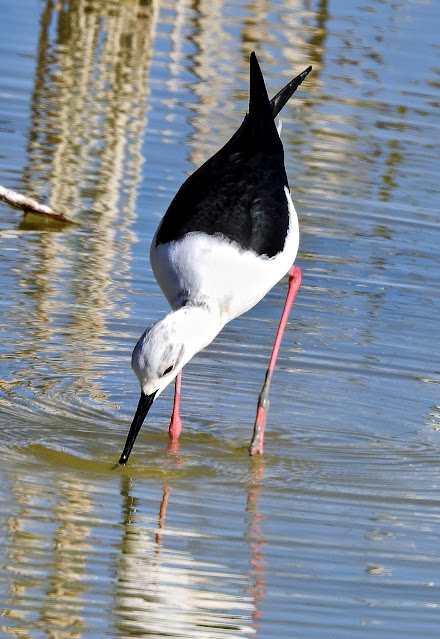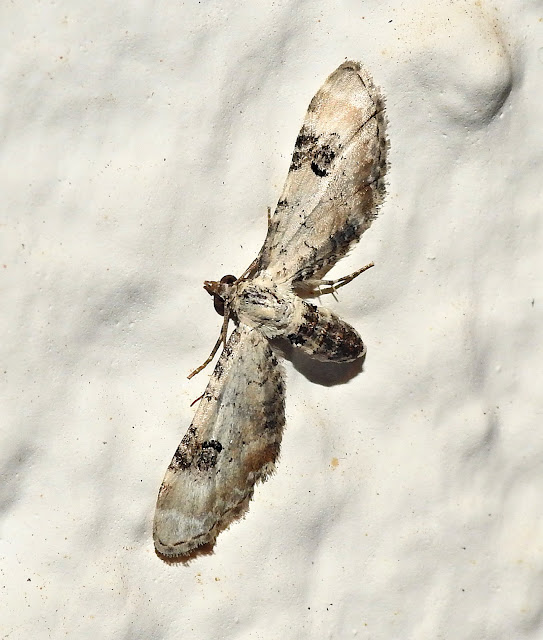The Eurasian blackcap (Sylvia atricapilla), usually known simply as the blackcap, is a common and widespread typical warbler. It has mainly olive-grey upperparts and pale grey underparts, and differences between the five subspecies are small. Both sexes have a neat coloured cap to the head, black in the male and reddish-brown in the female. The male's typical song is a rich musical warbling, often ending in a loud high-pitched crescendo, but a simpler song is given in some isolated areas, such as valleys in the Alps. The blackcap's closest relative is the garden warbler, which looks quite different but has a similar song.
The blackcap breeds in much of Europe, western Asia and northwestern Africa, and its preferred habitat is mature deciduous woodland. The male holds a territory when breeding, which is defended against garden warblers as well as other blackcaps. The nest is a neat cup, built low in brambles or scrub, and the clutch is typically 4–6 mainly buff eggs, which hatch in about 11 days. The chicks fledge in 11–12 days, but are cared for by both adults for some time after leaving the nest. The blackcap is a partial migrant; birds from the colder areas of its range winter in scrub or trees in northwestern Europe, around the Mediterranean and in tropical Africa. Some birds from Germany and western continental Europe have adapted to spending the winter in gardens in Great Britain and Ireland. Insects are the main food in the breeding season, but, for the rest of the year, blackcaps survive primarily on small fruit. Garden birds also eat bread, fat and peanuts in winter.
Despite extensive hunting in Mediterranean countries and the natural hazards of predation and disease, the blackcap has been extending its range for several decades, and is classified by the International Union for Conservation of Nature as least concern. Its rich and varied song has led to it being described as the "mock nightingale" and it has featured in literature, films and music. In Messiaen's opera Saint François d'Assise, the saint is represented by themes based on the blackcap's song.
Deciduous woodland is the preferred breeding habitat.The blackcap's main breeding habitat is mature deciduous woodland, with good scrub cover below the trees. Other habitats, such as parks, large gardens and overgrown hedges, are used as long as they meet the essential requirements of tall trees for songposts and an established understory. Where other Sylvia warblers also breed, blackcaps tend to use taller trees than their relatives, preferably those with a good canopy, such as pedunculate oak. In prime habitat, breeding densities reach 100–200 pairs per square kilometre (250–500 pairs per square mile) in northern Europe, and 500–900 pairs per square kilometre (1,250–2,250 pairs per square mile) in Italy. Densities are much lower in poorer habitats such as conifer forests. Breeding occurs in Europe at altitudes up to 2,200 m (7,200 ft).
The preferred winter habitat around the Mediterranean is scrub and olive orchards, where densities approach the levels found in the best breeding areas. The British wintering population is atypical, with 95% found in gardens, mostly in towns at altitudes below 100 m (330 ft). In Africa, habitats include cultivated land, acacia scrub, mangroves and forest, and these warblers are found at altitudes up to 3,600 m (11,800 ft) in the east of the continent. Wintering birds wander in search of good fruit supplies, but often stay in good feeding areas, and return in subsequent winters. Migrants may occur in a wide variety of habitats, such as reed bed and fen, but show a preference for shrubland.


%20%201.jpg)






%201.jpg)






%201.jpg)
%202.jpg)
%201.jpg)
%202.jpg)













%201.jpg)


%201.jpg)
%202.jpg)
%201.jpg)
%202.jpg)

%201.jpg)
%202.jpg)
%201.jpg)

%201.jpg)
%202.jpg)
%202.jpg)


